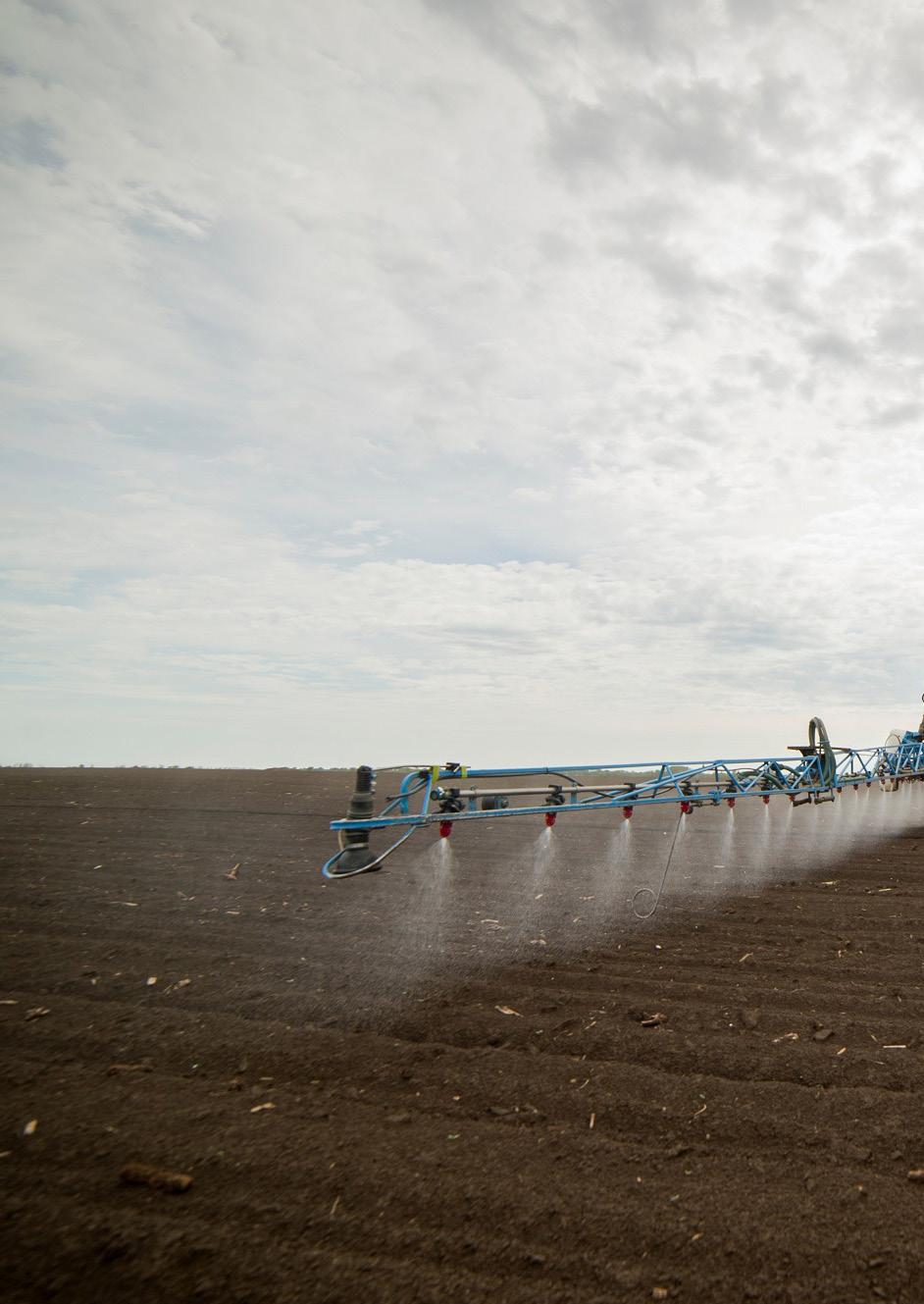
3 minute read
GLYPHOSATE LINKED TO LIVER AND METABOLIC PROBLEMS IN YOUNG ADULTS
from Pesticide News - Issue 131
by PAN UK
By Kate Raphael, Environmental Health News
In a first-of-its kind study, researchers found children exposed to the controversial herbicide were more likely in early adulthood to have a collection of symptoms that increase risk of heart disease, diabetes and stroke.
Over the last decade, Dr. Charles Limbach noticed something strange in his family medicine practice in East Salinas, California. Kids between 5 and 15 years old showed elevated levels of liver enzymes, a sign of liver inflammation.
Limbach ordered a panel of medical tests on each patient and repeatedly saw the same result: fatty liver disease.
“When I trained in family medicine here in Salinas about 30 years ago, fatty liver was never even mentioned,” Limbach told Environmental Health News (EHN). Now, a hundred kids in his practice have fatty liver disease, characterized by excess fat stored in the liver, which can lead to long-term liver damage.
Limbach read research led by Paul Mills, family medicine and public health professor at UC San Diego. Mills' study showed a link between fatty liver disease in adults and exposure to glyphosate, the world’s most commonly used herbicide, and the active ingredient in Roundup. “This bell rang in my head,” Limbach said, noting that many of the kids in his practice ate cereal products from crops treated with glyphosate.
Fatty liver disease and metabolic syndrome, a collection of symptoms that increase risk of heart disease, diabetes and stroke, are rising among children and young adults in the U.S., and new research published in Environmental Health Perspectives helps explain why. Spurred by Limbach’s observations, researchers at the UC Berkeley School of Public Health found that childhood exposure to glyphosate is linked to liver inflammation and metabolic syndrome in early adulthood. These conditions can lead to liver cancer, diabetes and cardiovascular disease.
Glyphosate has also been linked to cancer. Bayer (the company that acquired Roundup's manufacturer, Monsanto, in 2018) is embroiled in hundreds of thousands of cancer-related lawsuits. Glyphosate use in the U.S. has skyrocketed in the last two decades, so while the study population lives in Salinas, California, an agricultural community, the findings have national implications.
Lead author Brenda Eskenazi, director of UC Berkeley’s Center for Environmental Research and Children’s Health, and her team used data from a study Eskenazi initiated two decades prior. From 2000 to 2002, the researchers enrolled pregnant women and babies born in the Salinas Valley, nicknamed “America’s salad bowl” and producing nearly half the country’s lettuce. From birth to age 18, Eskenazi’s team collected hundreds of thousands of biological samples, health records and glyphosate exposure data from 480 mother-child pairs.
In their newly published study, the researchers analyzed urine samples from the pregnant mothers and their children at ages 5, 14 and 18. High concentrations of glyphosate and AMPA, a derivative of glyphosate, in children’s urine was linked to liver inflammation and metabolic syndrome at age 18. The researchers observed this association independent of body size, even though the study participants were more likely to have high body mass indices.
Robin Mesnage, molecular biologist at King’s College London, told EHN that “the impact of glyphosate on mitochondria causes an oxidative stress,” an imbalance of reactive oxygen-containing molecules, “which can have downstream effects on many tissues.”
Proximity to pesticides
Furthermore, Eskenazi’s team found that childhood proximity to glyphosate use predicted metabolic syndrome at age 18. Since 1990, California has required full, detailed disclosure of all pesticide use. Eskenazi’s team used those data to estimate the amount of glyphosate applied within one kilometer of each study participant’s home, from birth to age 5.
Glyphosate use near participants’ homes was low during their early childhood, but higher when they reached ages 14 and 18. Indeed, during this time, as crops genetically engineered to tolerate herbicides came on the market, glyphosate use skyrocketed across the country. From 1995 to 2014, annual agricultural use of glyphosate in the U.S. increased from 27 million pounds to a peak of nearly 250 million, according to Charles Benbrook, executive director of the Heartland Health Research Alliance.
Glyphosate in wheat, oats, barley and beans
But risk of glyphosate exposure is significant even in urban areas, and crops treated with glyphosate are distributed throughout the country. “Eighty percent of the typical dietary exposure to members of the public in the U.S. that aren't handling or spraying a glyphosate-based herbicide come from wheat, oats, barley and edible beans,” Benbrook told EHN. These findings are relevant for children everywhere; the levels of glyphosate and AMPA among the Salinas community are within the range reported for the general U.S. population, Eskenazi said.

Glyphosate may be necessary for some agricultural applications, but “it's not essential for lawns and golf courses,” Eskenazi said. The Environmental Protection Agency reports that glyphosate poses no human health hazard, and Roundup and other glyphosate-containing herbicides are available over the counter. But Eskenazi advocates for limiting glyphosate use until we know more. It will also be important to regulate use of paraquat, another dangerous herbicide linked to Parkinson’s disease, so that paraquat is not simply swapped for glyphosate, Benbrook told EHN.
Scant research explores glyphosate effects in humans, especially among vulnerable groups like children. Eskenazi and her team have plans for deeper investigation. Since 2000, Ezkenazi has been collecting health data on neurodevelopment, respiratory disease, hormones and puberty, among other metrics in the Salinas population. “We need to follow up with the whole cohort and see what associations we see not only with metabolic disease but other health outcomes as well,” Eskenazi said.
Find the original article written by Kate Raphael, publishd in Environmental Health News here. Find the study by Eskenazi et al . published in March 2023 in Environmental Health Perspectives here





